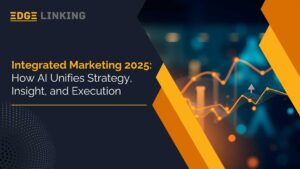In a world overflowing with information, decisions are no longer made on instinct alone. The brands that dominate industries, the scientists who make groundbreaking discoveries, and the leaders who stay ahead of the curve all have one thing in common—they rely on data. But data itself is just noise unless you know how to listen.
Data analysis is the art of turning raw numbers into narratives, patterns into predictions, and information into intelligence. Its why businesses can anticipate market trends, why doctors can diagnose diseases faster, and why algorithms seem to know what you’ll watch next before you do.
But how does data go from chaotic and unstructured to a powerful decision-making tool? Let’s break down the process, the different types of data analysis, and how it fuels smarter, more strategic choices across industries.
What Is Data Analysis?
At its core, data analysis is the process of inspecting, cleaning, transforming, and modeling data to uncover useful information, draw conclusions, and support decision-making. It involves applying statistical, logical, and computational techniques to identify patterns, trends, and correlations within data sets.
Data analysis is used across various industries, including finance, healthcare, marketing, and technology, enabling organizations to make evidence-based decisions that drive efficiency, growth, and competitive advantage.
The Data Analysis Process
Effective data analysis follows a structured approach to ensure accuracy and reliability. The key steps include:
- Defining the Objective: Identifying the problem or question that needs to be answered using data.
- Data Collection: Gathering relevant data from various sources, including databases, surveys, and digital interactions.
- Data Cleaning: Removing inconsistencies, duplicates, and errors to ensure high-quality data.
- Data Exploration: Using statistical techniques and visualization tools to understand data patterns and relationships.
- Data Analysis: Applying analytical methods (e.g., descriptive statistics, machine learning models) to extract meaningful insights.
- Interpretation & Reporting: Presenting findings in a clear and actionable manner through reports, dashboards, and visualizations.
- Decision-Making & Action: Using insights to make strategic business decisions and measure outcomes.
A well-executed data analysis process ensures that organizations can rely on data for accurate and timely decision-making.
Types of Data Analysis
Data analysis can be classified into four main types, each serving a distinct purpose in understanding and leveraging data effectively:
- Descriptive Analysis
Descriptive analysis answers the question: “What happened?” It summarizes historical data to identify patterns and trends.
- Example: A retail company analyzing past sales data to determine peak shopping seasons.
- Techniques: Mean, median, mode, standard deviation, data visualization (charts and graphs).
- Diagnostic Analysis
Diagnostic analysis answers: “Why did it happen?” It digs deeper into data to understand the causes behind trends and anomalies.
- Example: A hospital investigating why there was a spike in patient readmissions.
- Techniques: Regression analysis, correlation analysis, drill-down analytics.
- Predictive Analysis
Predictive analysis forecasts future outcomes based on historical data, answering: “What will happen?”
- Example: A bank predicting which customers are likely to default on their loans.
- Techniques: Machine learning, time series analysis, predictive modeling.
- Prescriptive Analysis
Prescriptive analysis provides recommendations for action, answering: “What should we do next?”
- Example: An e-commerce company using AI to suggest personalized product recommendations.
- Techniques: Decision algorithms, optimization models, AI-driven analytics.
Organizations that leverage all four types of data analysis can optimize operations, anticipate future challenges, and stay ahead of the competition.
What Is Data-Driven Decision-Making?
Data-Driven Decision-Making refers to the practice of making strategic choices based on data insights rather than intuition or guesswork. By integrating data into decision-making processes, businesses can:
- Reducing Risks and Uncertainties
Data removes the guesswork from decision-making by providing objective insights based on real trends, patterns, and evidence. By relying on accurate historical data and predictive models, organizations can anticipate market shifts, customer behavior changes, and potential risks—enabling them to take proactive measures instead of reacting to crises.
Example: A financial institution using predictive analytics to assess credit risks before approving loans, thereby reducing defaults.
- Enhancing Efficiency and Resource Allocation
With DDDM, businesses can optimize operations, allocate resources more effectively, and eliminate inefficiencies. Data highlights which processes need improvement, where costs can be reduced, and how teams can work smarter, not harder.
Example: A logistics company analyzing delivery routes to minimize fuel costs and improve delivery speed.
- Improving Customer Satisfaction Through Personalization
Understanding customer behavior through data allows businesses to offer tailored experiences, personalized recommendations, and better service. Customers appreciate when businesses anticipate their needs, leading to increased loyalty and satisfaction.
Example: Streaming platforms like Netflix and Spotify using viewing/listening history to suggest personalized content.
- Driving Innovation and Competitive Advantage
Businesses that harness data are often the first to spot new opportunities, market gaps, and emerging trends. This positions them ahead of competitors, fostering innovation and ensuring long-term growth.
Example: E-commerce giants like Amazon using real-time consumer data to launch products that align with evolving market demands.
DDDM transforms raw data into strategic insights, enabling businesses to make informed, intelligent choices that drive success.
Most Commonly Asked FAQs on Data Analysis
- What is the difference between data analysis and data science?
- Data analysis focuses on extracting insights from data using statistical and analytical methods.
- Data science is a broader field that includes data analysis, machine learning, artificial intelligence, and complex algorithms to build predictive models and automate decision-making.
- What tools are commonly used for data analysis?
- Popular tools include Excel, SQL, Python, R, Tableau, Power BI, SAS, and Google Analytics. Each tool has its strengths, from basic data visualization to complex statistical modeling.
- How is data analysis used in business intelligence?
- Business intelligence (BI) relies on data analysis to track key performance indicators (KPIs), improve operational efficiency, and uncover market trends that shape strategic decisions.
- Is data analysis only for large organizations?
- No. Businesses of all sizes can leverage data analysis. Small businesses use it to optimize marketing efforts, while startups use it for customer insights and growth strategies.
- What skills are needed for a career in data analysis?
- Key skills include statistical knowledge, proficiency in programming (Python, R, SQL), data visualization, critical thinking, and business acumen.
- How does artificial intelligence impact data analysis?
- AI enhances data analysis by automating processes, improving accuracy, and enabling real-time decision-making through advanced machine learning models.
- What are the biggest challenges in data analysis?
- Common challenges include poor data quality, data privacy concerns, integrating data from multiple sources, and ensuring actionable insights rather than just raw numbers.
Conclusion:
The ability to analyze and interpret data is no longer optional—it’s a necessity for businesses aiming to stay competitive. Data analysis empowers organizations to make better decisions, uncover hidden opportunities, and mitigate risks effectively.
As technology advances, the role of AI, automation, and real-time analytics will further revolutionize data-driven decision-making. Whether you’re an entrepreneur, a corporate leader, or a data enthusiast, mastering data analysis is a valuable skill that will shape the future of business and innovation.
So, the next time you see a trend, don’t just observe it—analyze it. Because in the world of data, the right insights can be the difference between success and failure.






